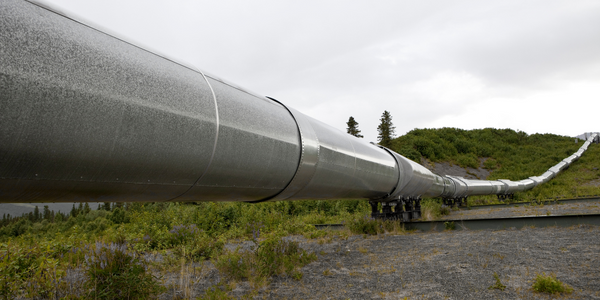Technology Category
- Infrastructure as a Service (IaaS) - Private Cloud
- Platform as a Service (PaaS) - Application Development Platforms
Applicable Industries
- Healthcare & Hospitals
- Oil & Gas
Use Cases
- Inventory Management
- Supply Chain Visibility
About The Customer
Carta is a San Francisco-based company that specializes in capitalization table management and valuation software. The company is on a mission to create more owners and provides a platform that helps companies, employees, and investors manage valuations, equity, and investments. It also provides real-time pictures of company ownership on a unified platform. Carta operates CartaX, a private stock marketplace that allows shareholders to sell stocks before the company goes public. In 2021, the company raised a $500 million funding round by using its own platform to sell its shares. The company has over 1,700 employees and uses Greenhouse as its Applicant Tracking System (ATS).
The Challenge
Carta, a capitalization table management and valuation software company, faced significant challenges in its recruitment process. The recruiters were manually maintaining spreadsheets of candidates to keep their workflows moving, which resulted in little visibility into their colleagues' pipelines. The company was also expanding its recruitment efforts into new geographical areas, and they lacked a clear understanding of what their recruitment funnels should look like in these new regions. They needed pipeline views that would allow them to show hiring managers their full-funnel efforts, particularly the work at the top, and better gauge the talent market in the new areas. Additionally, the recruiters needed an easier way to see throughput rates to assess the health of their funnels and identify areas where process improvements could be leveraged.
The Solution
Carta adopted Gem, an interactive and collaborative hiring dashboard, to address these challenges. With Gem's Talent Pipeline, Carta's recruiters and managers could easily see where candidates were in every stage of the funnel in one view. The recruiters could filter candidates specifically in the stages their hiring managers cared about, ensuring the right stakeholders received the right data. The Talent Pipeline also provided full-funnel insights, enabling the team to answer important questions such as whether certain roles had healthier funnels than others and if there were best practices they could apply from one funnel to the next. Gem's consolidated view allowed Carta's team to see where candidates were in each stage of the funnel, regardless of who the recruiter was for the role. This was particularly useful for roles at Carta that had pooled models, where multiple recruiters recruited out of the same buckets for the same roles. Gem's ATS integration also ensured that recruiter tags corresponded with Carta's Greenhouse data.
Operational Impact
Quantitative Benefit

Case Study missing?
Start adding your own!
Register with your work email and create a new case study profile for your business.
Related Case Studies.

Case Study
Taking Oil and Gas Exploration to the Next Level
DownUnder GeoSolutions (DUG) wanted to increase computing performance by 5 to 10 times to improve seismic processing. The solution must build on current architecture software investments without sacrificing existing software and scale computing without scaling IT infrastructure costs.

Case Study
Remote Wellhead Monitoring
Each wellhead was equipped with various sensors and meters that needed to be monitored and controlled from a central HMI, often miles away from the assets in the field. Redundant solar and wind generators were installed at each wellhead to support the electrical needs of the pumpstations, temperature meters, cameras, and cellular modules. In addition to asset management and remote control capabilities, data logging for remote surveillance and alarm notifications was a key demand from the customer. Terra Ferma’s solution needed to be power efficient, reliable, and capable of supporting high-bandwidth data-feeds. They needed a multi-link cellular connection to a central server that sustained reliable and redundant monitoring and control of flow meters, temperature sensors, power supply, and event-logging; including video and image files. This open-standard network needed to interface with the existing SCADA and proprietary network management software.

Case Study
Refinery Saves Over $700,000 with Smart Wireless
One of the largest petroleum refineries in the world is equipped to refine various types of crude oil and manufacture various grades of fuel from motor gasoline to Aviation Turbine Fuel. Due to wear and tear, eight hydrogen valves in each refinery were leaking, and each cost $1800 per ton of hydrogen vented. The plant also had leakage on nearly 30 flare control hydrocarbon valves. The refinery wanted a continuous, online monitoring system that could catch leaks early, minimize hydrogen and hydrocarbon production losses, and improve safety for maintenance.

Case Study
Hospital Inventory Management
The hospital supply chain team is responsible for ensuring that the right medical supplies are readily available to clinicians when and where needed, and to do so in the most efficient manner possible. However, many of the systems and processes in use at the cancer center for supply chain management were not best suited to support these goals. Barcoding technology, a commonly used method for inventory management of medical supplies, is labor intensive, time consuming, does not provide real-time visibility into inventory levels and can be prone to error. Consequently, the lack of accurate and real-time visibility into inventory levels across multiple supply rooms in multiple hospital facilities creates additional inefficiency in the system causing over-ordering, hoarding, and wasted supplies. Other sources of waste and cost were also identified as candidates for improvement. Existing systems and processes did not provide adequate security for high-cost inventory within the hospital, which was another driver of cost. A lack of visibility into expiration dates for supplies resulted in supplies being wasted due to past expiry dates. Storage of supplies was also a key consideration given the location of the cancer center’s facilities in a dense urban setting, where space is always at a premium. In order to address the challenges outlined above, the hospital sought a solution that would provide real-time inventory information with high levels of accuracy, reduce the level of manual effort required and enable data driven decision making to ensure that the right supplies were readily available to clinicians in the right location at the right time.









